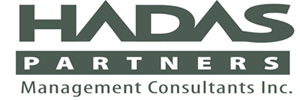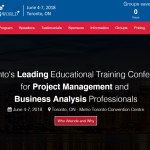Team activities are powerful tools for increasing willingness to accept change. However, practitioners sometimes misuse activities such as workshops: they either overuse them, or else ignore them completely.
On one end of the spectrum, some people view Organizational Change Management (OCM) as little more than a bunch of workshops. As a result OCM appears to be a series of random, ad hoc, events.
In these situations clients can become skeptical, which is fair. They perceive the value of change management as questionable. These clients see OCM as feel-good kumbaya team activities at best. And at worst, a colossal waste of everyone’s time.
At the other end of the spectrum, some project leaders think OCM is only communications and training. Here project leaders do not fully understand what change management is.
In these situations people omit team sessions altogether. They do not see the value of pulling a group of busy people to work together for several hours. What will the outcomes be? How are they related to the project objectives? How should they measure these outcomes? So, workshops are excluded because they are costly and time consuming.
And that’s too bad. Used in the right way, group activities super-charge the willingness of stakeholders to adopt new technology and processes. In addition, they motivate management to lead the change across the entire organization!
The best way to view these activities is the way a surgeon looks at a scalpel: they are precise instruments for specific purposes.
What kinds of group sessions should you use? It depends your need. These are surgical tools. You use them depending on what you need to achieve!
Here are examples of team sessions and how we used them to build engagement by leaders and employees.
Change Network
 Many of our projects involve large organizations with offices and facilities spread across the country or globe. The success of the project therefore depends on all of these locations adopting the change. So it becomes important to ensure that all of them participate as planned.
Many of our projects involve large organizations with offices and facilities spread across the country or globe. The success of the project therefore depends on all of these locations adopting the change. So it becomes important to ensure that all of them participate as planned.
In these situations we have used a Change Network. A Change Network is a team of influencers from each of the separate locations. They meet on a regular basis, usually weekly, to accomplish two things. One, provide input to any implementation plans that are developed centrally. And two, drive the change in their locations.
It takes focus and vigorous negotiations to establish this network. You need right people to participate, a compelling agenda, and quick and visible results.
If any of these elements are missed these sessions will fizzle out within 3-4 weeks. Then you will have a failure on your hands will need to recover from a loss of credibility.
But if done well, these sessions are very effective. These individuals will do the hard work of getting employee buy-in for the project team. It is they who will drive the change in their location, and therefore clear across the organization! And, it doesn’t matter how far from head office they may be. Once you set this up properly, you can relax.
For more on this activity, here is a blog that gets into more detail in how to set it up. To get a checklist of what you need from a Change Champion (and to sign up to our blog) follow this link.
Collaboration Kick-start
What if you have to bring new groups together? For example, because of an acquisition, merger, or the need to set up a new business unit with a different function, such as financial or document processing. The individuals in these groups have different ways of doing things and often have different mindsets and cultures.
In addition, one group may see themselves as somehow superior to the other. Maybe they are the acquirer (the winning team!). Or maybe they are the pros who send the undesirable work to the lower classes.
The other group then begins to feel inferior and resentment builds. Then collaboration stalls and productivity suffers.
So what’s the team activity here? We use a workshop format that starts people working together on common problems, face-to-face. These are sometimes called Team Building or Meet and Greet sessions, but these names do not communicate the deep value that these activities bring.
 One of our clients came up with a name that we like much better and have used since then: Collaboration Kick-start Sessions.
One of our clients came up with a name that we like much better and have used since then: Collaboration Kick-start Sessions.
On one of our projects we needed to integrate a newly created processing centre into a professional services organization. The company had tried to implement similar centres in the past. All of these attempts resulted in some kind of failure because of the “us vs them” attitudes that evolved.
We set up a full day workshop that brought people from the centre and offices together. In addition to chatting and sharing meals together, they started working together on processes for managing their work across the organizations.
But far more importantly, they developed a new respect for each other’s abilities. They developed close personal bonds. Afterwards when problems arose, they were resolved with a quick phone call to a friendly colleague.
Other Team Activity Examples
There are other types of these team activities and workshops. Instead of going into the same level of detail, because there are too many for a blog, here is a list. These are other types of sessions and workshops we have used and the situations where they proved effective.
Workout Workshops – Pioneered by General Electric, in collaboration with Ernst & Young, these are amazing team activities at removing obstacles and irritants in processes. “Taking the dumb out” as one of our clients called it.
Day-in-the-Life: These are marvellous tools for getting employees to really understand how work will flow after the change, what their role will be, and why their role is important for the overall success.
Lunch and Learns – Very effective tools to engage small co-located groups in a question-and-answer education session. Cost is also small: the price of lunch for 10-20 people.
Show & Tell Sessions: Especially useful in ERP implementations, these team activities are more than product demos. They allow future users to see what their particular information and screens will look like and how they will do their jobs. And for the project team, they learn what more is needed to get users comfortable an on board.
Appreciative Inquiry: Initiated after a discussion by a Pope and the Dalai Lama, this is more an approach than a single team activity. However it is invaluable in environments steeped in negativism and poor morale.
Critical Success Factors
All of these team activities are excellent tools for engaging employees and moving the agenda forward. However, there are some important things to bear in mind in terms what to do.
First of all, every one of these team activities is designed to provide two-way feedback. It is imperative to let people speak! The engagement comes from people asking questions and allowing them to figure things out for themselves.
Secondly, it is important to tightly manage these sessions so that they don’t get out of control. If facilitated weakly, they can disintegrate into lengthy gripe sessions. People are allowed to speak, but within parameters led by a strong and competent facilitator.
Finally, it is important to closely manage the timelines of each session. It is easy to feel obligated to give everyone the floor to speak. If this happens the agenda can begin to drift. And then there is the very real danger of losing the objective.
Prepare, Prepare, Prepare
To accomplish all of this it requires a lot of preparation. As a rule of thumb, it takes twice the time on preparation than the team activities take. And that is if you are familiar with the workshop format that is listed above. Otherwise, preparation time can be four times or more of the time it actually takes to facilitate the workshop.
Also, there has to be an action plan for the participants at the end of each session. Having things to do directly correlates with post-session satisfaction.
Finally, it is critical to follow up on any action items or ‘Parking Lot’ items logged during the team activities. Following up and reporting on progress reinforces the importance of having had the team activity. And following up result in making achievements visible. Conversely, not following up can lead to accusations of creating more shelf ware and little else.
Now it’s time to scrub up and get ready for the OR. See you next time!













